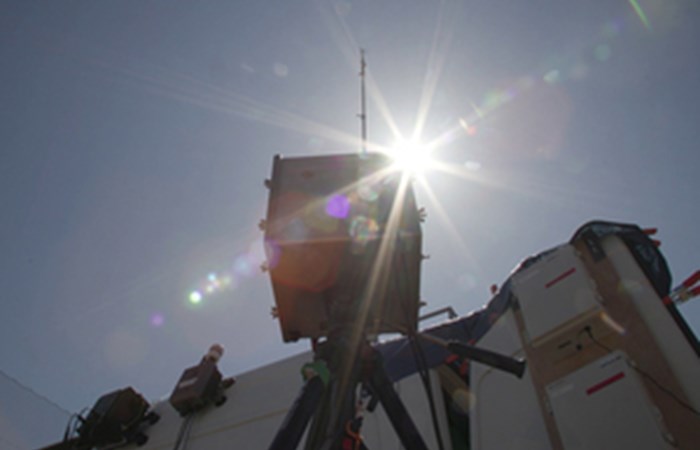Defence Science Technology Laboratory

The Defence Science and Technology Laboratory (Dstl) has led a unique trial on behalf of the UK Home Office and the Department for Transport. The trial took place at a number of sites across London testing a range of state-of-the-art chemical and biological sensors. The trial contributes towards the US Defense Advanced Research Projects Agency (DARPA) https://www.darpa.mil/program/sigma-plus led SIGMA+ programme.
SIGMA: Sensing Airborne Hazards - YouTube
The SIGMA+ programme aims to see if the sensors can detect chemical, biological, radiological, nuclear and explosive (CBRNE) threats in a city environment. Vapours and tiny particles are detected that can alert authorities to the presence of materials of concern that are in the sensor library. Alarm systems for the sensors are being developed that could provide early warning protection for UK cities and major events.
SIGMA+ uses a cloud-based system to host, fuse and visualise sensor data. This system, named DTECT, provides an interface to receive sensor data, store it, and then present sensor locations, outputs and alarms to users on a map-based interface.
Dstls project lead said:
Its been great to collaborate with our American colleagues and our US and UK technology providers. After two years of not being able to meet or carry out joint research, its been a great achievement to finally get this trial out in the field and I have no doubt we have gathered valuable data.
The trial has enabled us to understand the maturity of the sensors as they are developed, and assess how they perform in a UK city. The results have shown the sensors worked well in London, and the experience gained operating them has shown us where development should focus in the future.
The collaboration with DARPA and their project partners is incredibly valuable as it provides the UK with access to emerging technology developments. Dstl has been able to share its technical expertise to help shape the development of the system and provide an independent assessment of its readiness through testing. This provides the UK with key information that could help to shape future policy and next steps in development and exploitation.
As well as detection of chemical, biological, radiological, nuclear and explosive (CBRNE) threats in a city environment, the system could be used to provide protection for events, such as major games, and other high value locations.
Notes to editors:
The technologies used cover sensors operating using:
- Ion Mobility Spectrometry (IMS) to detect chemicals.
- Conductive polymer sensors to detect chemicals.
- Mass Spectrometry to detect and identify chemicals.
- Raman Spectroscopy to detect bacteria and viruses.
- Rapid sequencing to detect and identify bacteria and viruses.
Partners involved include:
- Physical Sciences Inc. (Andover, MA, USA) IMS technologies and DTECT data fusion
- Smiths Detection (Watford, UK) Advanced IMS (AIMS) sensor, IMS technologies
- Bayspec Inc. (San Jose, CA, USA) Continuity Mass Spectrometer
- University of Utah (Salt Lake City, UT, USA) ChemAirU conducting polymer sensors
- Battelle (Columbus, OH, USA) REBS+ Raman Spectrometer
- Kromek (Sedgefield, UK) Rapid sequencing
- TwoSix (Arlington, VA, USA) DTECT
